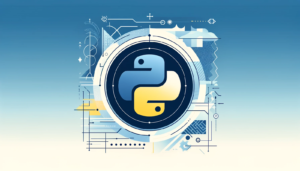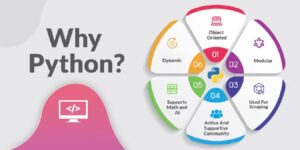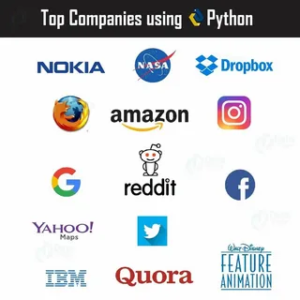Who hasn't heard about Python? Even those far removed from the tech world recognize this programming language.
The question is: Is Python really good for software creation? Where can it be a great choice, and what is the cost of developing software with Python? Let’s answer these questions!
What is Python?
Python is a high-level programming language. Its design philosophy emphasizes code readability and syntax, which allows programmers to express concepts in fewer lines of code than in languages like C++ or Java.
Its key traits are:
- Readability. Its clear, readable syntax closely resembles English.
- Extensive libraries. Python is armed with thousands of libraries and dozens of frameworks like Django, Flask, Pandas, and TensorFlow.
- Community support. A large and active community provides extensive resources, tutorials, and support.
- Ease of learning. This language is ideal for beginners due to its straightforward syntax and comprehensive documentation.
source: kadvacorp.com
Where does Python excel?
Web development
Python has a vast array of high-quality modules, which help to bolster a development process even for complex web projects. The language is well-suited for statistical and analytical services.
Real-life examples of large apps that use Python include:
- YouTube. Originally built in PHP, YouTube incorporated Python for various functionalities.
- Instagram. This social media platform uses Python’s Django framework to handle its user interactions.
How much does software development cost: A basic Python web application typically requires from $5,000 to $12,000. The average cost of developing software in Python for a mid-size project is from $15,000 to $45,000. The budgets for large projects exceed $50,000.
Data science and machine learning
Python is a very promising solution for data analysis, machine learning, and scientific computing. It contains a large number of libraries, which simplify difficult mathematical computations and data processing.
Furthermore, Python's vast and active community adds to an abundance of tutorials, documentation, and forums, making it simpler for data scientists and machine learning engineers to resolve issues.
source: blurbgeek.com
Real-life examples:
- Google utilizes Python for its innovative ML and AI improvements. By the way, TensorFlow, one of the most prominent machine learning libraries, was created by Google in Python.
- Netflix uses Python to enhance recommendations and manage its large data warehouse. It manipulates and processes data using libraries such as Pandas and Numpy.
The prices for data analysis projects typically range from $3,000 to $20,000.
Automation and scripting
Python is a simple language, which means not just its ease to learn but also its aptitude for scripting and automating repetitive operations (for example, for regular automated testing).
A real-life example:
- Dropbox. Python is used for the API backend as well as automated chores to boost efficiency and maintain the infrastructure.
Basic automation tasks and data scraping with Python will cost $1,000 - $6,000. Comprehensive automation systems and enterprise-level automation will fetch you $10,000 - $50,000.
Where may Python fall short?
Performance-intensive applications
Python is an interpreted language. Therefore, compared to compiled languages like C++ or Java, it is frequently slower. For applications like real-time systems or game development that demand great speed and minimal latency, Python might not be the ideal option.
Although Python is not commonly used for high-performance applications, it can be used as a pet language in pairs with another language. For example, Google's search engine is developed in C++, but Python is used alongside this language to create a more user-friendly interface.
Mobile development
Python is not usually the first pick for mobile app development. While frameworks like Kivy and BeeWare enable mobile programming in Python, they are not as mature or commonly used as native development tools such as Swift for iOS or Kotlin for Android. As a rule, Python frameworks are suitable for small projects, but their viability for professional development is quite questionable.
There are few examples of apps in Python. Among the most famous software programs, we can mention Calibre, the open-source e-book management tool that uses Python for its cross-platform desktop application.
How much does it cost to create a software program with Python: around $3,000 - $10,000 for hobby apps and small-scale applications. Complex Python mobile software development costs $20,000 - $100,000.
A final note about Python development
Though not a common decision, Python is a good standalone and a pet language. If you're thinking about using Python for your next project, you should contact a professional development company. They can advise you on whether Python is a good fit for your unique requirements and how to use its capabilities to achieve your objectives.
Sources
Payroll Apps for Small Business: A Key to Small Business Payroll Efficiency – synder.com



